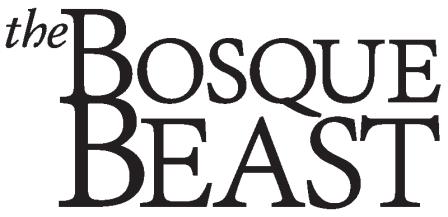
Blame it on nature
Even if half our stories this issue didn’t relate to the ongoing drought, it would be hard to miss the effect this cycle is having on wildlife. As natural historian Bill Dunmire notes, drought is nothing new to the Southwest, but permanent changes to the land caused by dams, water diversion, soil erosion, land development, and climate change make it increasingly difficult for nature to rebound.
Recently my husband and I returned to one of our favorite camping spots, El Vado Lake, which used to be such a paradise for wildlife that you could almost forget it was the gift of a dam on the Rio Chama. With the lake nearly empty, ugly bathtub rings not only shatter the illusion of unspoiled nature, but make it tragically clear that once you build a dam, the land will never return to what it was—at least not in this century.
So it is with much of what we take to be “natural.” I learned recently that the sparse pinyon-juniper landscape that has become a symbol for lonely New Mexico is actually the result of logging, overgrazing, and fire suppression over the last 150 years.
Most wildlife issues also have their roots in human engineering. Whether it’s free-roaming horses, runaway turkeys, or scavenging bears, looking to what’s “natural” in these cases overlooks the fact that nothing much is, anymore, in places like Corrales, Placitas, or Santa Fe, which have been settled for hundreds of years. The bottom line is that humans are behind most of the destruction of beauty and cruelty of suffering.
I had a personal experience of this recently that is as tiny as it was traumatic. One day in July, I came home to find one of those awful mouse traps that my husband sets in the ceiling, snapped and fallen from the crawl space above. Under it, I could see a mouse leg still moving, which—being ridiculously squeamish—I prayed was a final death twitch, and walked away.
Two hours later, not only was this mouse very much alive, but it had righted itself and was hopping around terrified, its head and forelegs caught in the trap.
I knew what my husband would say: Whack it with a shovel and end its misery. And maybe that is the reasonable thing to do. But caught at the intersection of informed wildlife management, agonized empathy, and a mystical mindset that sees messages in everything, I just stood there paralyzed with confusion and terror.
Empathy won, no question. Swallowing squeamishness, heart pounding, I freed the poor mouse to run off frantically—probably, as my husband later said, to die an agonizing death with half its bones broken. So be it, may God protect her. (I think it was a she.)
At the fuzzy meeting point of human culpability and humane management, the reality of suffering often drives people, against common sense, to feed feral horses, relocate prairie dog towns, and rescue birds that will die anyway. It may be more practical to let animals starve in a drought, or leave the birds and cats to fight it out. But since we can hardly claim anymore that it is nature’s doing, perhaps the best thing that remains for Homo sapiens is just to be kind.
